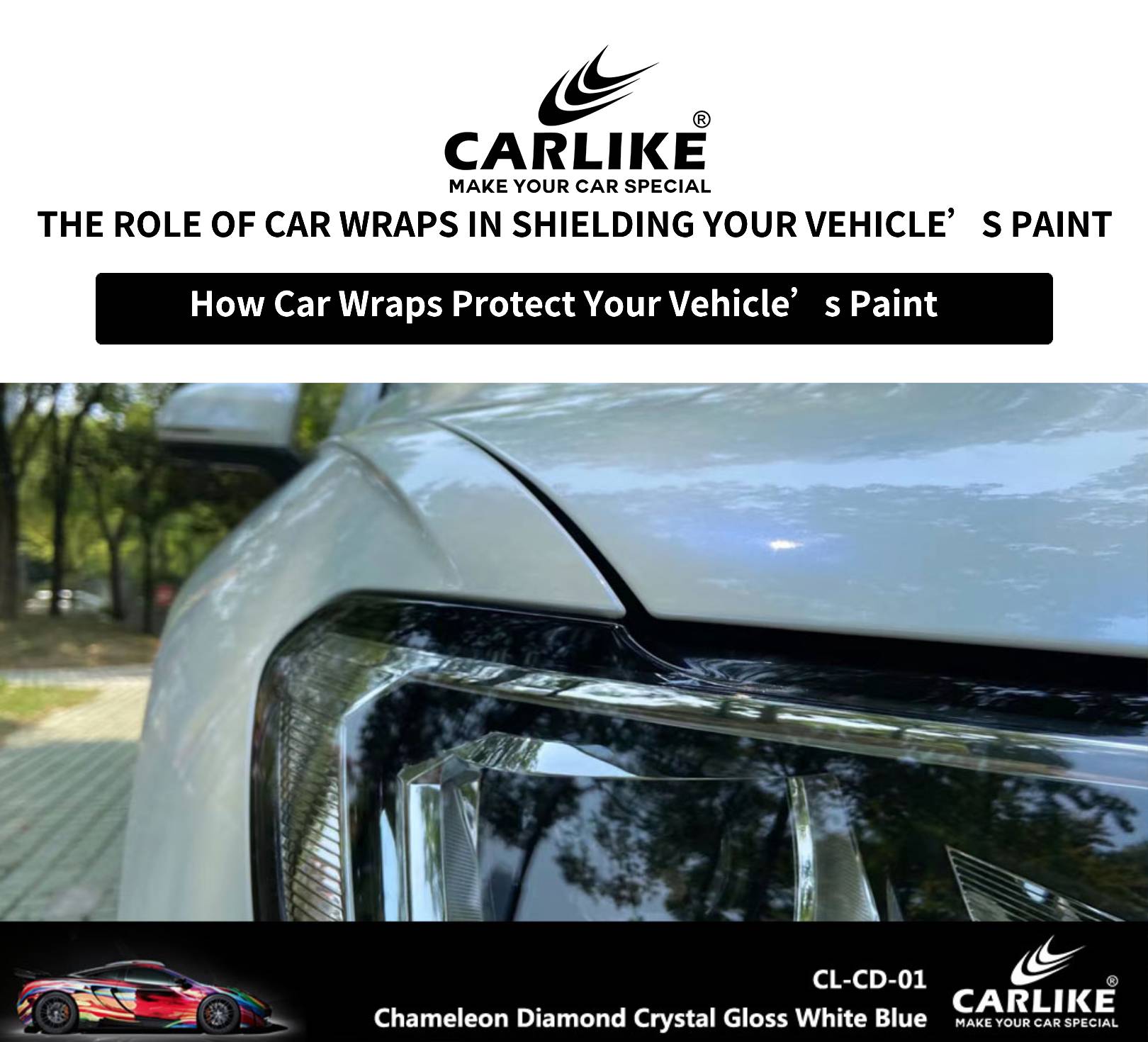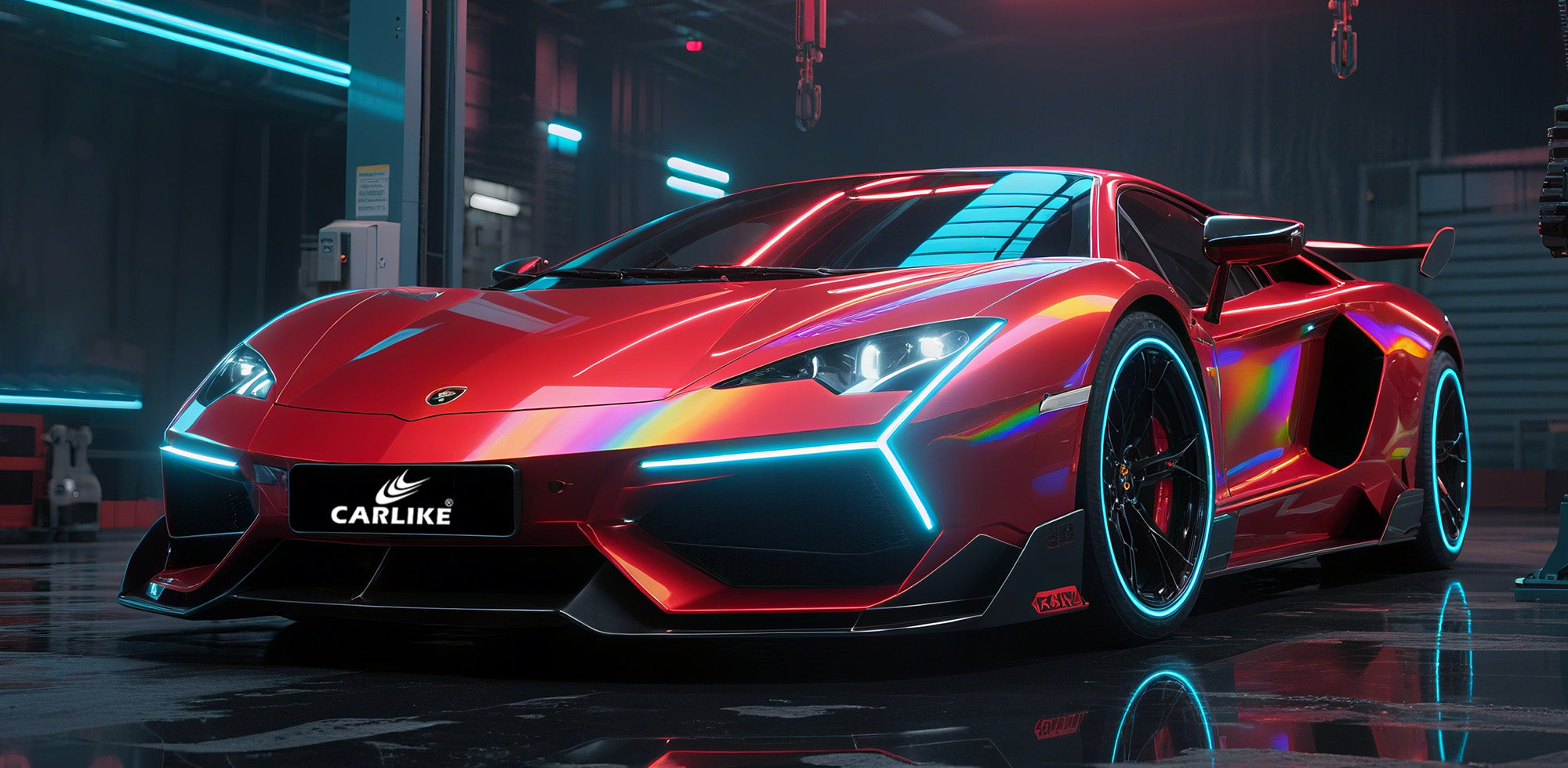ABOUT CARLIKE
CARLIKE® launched in 2012, mainly focus on premium car wrapping vinyls, with rich colors and stylish designs. High performance with economic price is always the persuit of CARLIKE®.
CARLIKE-Make Your Car Special.

CARLIKE-Make Your Car Special.
Introduction
Paint Protection Film (PPF) is a transparent, thermoplastic urethane film applied to the painted surfaces of a vehicle to protect against scratches, chips, and environmental contaminants. It is designed to be self-healing, meaning that minor scratches can disappear over time when exposed to heat. PPF offers a durable barrier against UV rays, road debris, and chemicals, helping to maintain the vehicle's appearance and resale value.
Car Wraps , on the other hand, are vinyl wraps that can be applied to the exterior of a vehicle to change its color or finish. They can be used for aesthetic customization or branding purposes. Car wraps come in various finishes, including glossy, matte, satin, and textured options. They can also feature intricate designs or graphics, allowing for extensive personalization.
There has been a significant increase in interest in vehicle customization and protection in recent years. As consumers seek to express their individuality and enhance their vehicles' appearance, they turn to car wraps for unique styling options. Additionally, the desire to protect investments against wear and tear has led to a growing market for PPF. This trend reflects a broader cultural shift towards personalization and self-expression in vehicle ownership, as well as an increased awareness of the benefits of protecting one's investment.
Overview of Paint Protection Film
What is Paint Protection Film (PPF)?
Paint protection film is a clear, durable polyurethane wrap that is applied to the exterior surfaces of vehicles to protect the paint from damage caused by road debris, scratches, chips, and environmental contaminants. The wrap acts as a barrier, absorbing impacts and preventing harm to the underlying paint. It is often referred to as a "clear bra" because of its application in protecting the front end of vehicles, similar to how a traditional bra protects a vehicle's paint.
How Does Paint Protection Film Work?
PPF works by creating a protective layer over the vehicle's paint. The wrap is designed to absorb impacts and resist abrasions, effectively protecting the paint from scratches and chips. Some advanced PPFs have self-healing properties, allowing minor scratches and swirl marks to disappear with heat exposure, such as from sunlight or warm water. This self-healing mechanism helps maintain the film's clarity and effectiveness over time.
Types of Paint Protection Film
-
Clear Paint Protection Film :
- Description : The most common type, it is virtually invisible once applied and maintains the vehicle's original appearance.
- Use : Often used on high-impact areas such as the front bumper, hood, fenders, and mirrors.
-
Self-Healing Paint Protection Film :
- Description : This type contains a specialized top coat that can heal minor scratches and swirl marks when exposed to heat.
- Use : Ideal for vehicles that may encounter heavy wear, as it keeps the wrap looking fresh and clear for longer periods.
-
Matte Paint Protection Film :
- Description : Specifically designed for matte-finished vehicles, this film protects the unique finish without adding gloss.
- Use : Used on vehicles with matte paint jobs to prevent damage while preserving the desired aesthetic.
-
Textured or Colored Paint Protection Film :
- Description : Available in various colors and textures, this film can enhance the vehicle's look while providing protection.
- Use : Used for custom applications, allowing vehicle owners to change the appearance while adding a protective layer.
Typical Applications on Vehicles
- High-Impact Areas : PPF is commonly applied to the front end of vehicles, including the hood, fenders, bumper, and side mirrors, where damage from rocks and debris is most likely to occur.
- Full Vehicle Coverage : Some vehicle owners opt for full coverage, applying PPF to the entire vehicle for maximum protection.
- Custom Applications : PPF can be used on specific areas, such as door edges, door sills, or any part of the vehicle that is prone to scratches and scuffs.
- Racing and Performance Vehicles : PPF is often used on high-performance vehicles to protect against track debris and wear from racing conditions.
Model number: CL-TPU
Characteristic: Heat repair
Film thickness: 10mil, 8.5mil, 7.5mil, 6.5mil
Release paper: Transparent
Durability: 5-7 years
Application: Car paint protection
Package: Full roll width 1.52m, length 15m, weight 13KG
Packing size: 1.55x0.15x0.15m

Benefits of Paint Protection Film
A. Protection from Damage
Paint Protection Film offers robust protection against various types of damage. It acts as a barrier against scratches, chips from road debris, and UV damage that can lead to fading and discoloration. By absorbing the impact from small stones and other environmental factors, PPF helps preserve the integrity of the vehicle's paint, keeping it looking newer for longer.
B. Self-Healing Properties
Many modern Paint Protection Films come equipped with self-healing properties. This means that minor scratches and swirl marks can disappear over time when exposed to heat (like from sunlight or a hot engine). The film's flexible nature allows it to return to its original state, making it an excellent choice for maintaining a flawless appearance with minimal effort.
C. Aesthetic Preservation
One of the primary benefits of PPF is its ability to preserve the original paint’s appearance. PPF is designed to be nearly invisible once applied, ensuring that the vehicle’s aesthetic remains intact. It protects against yellowing and staining, which can occur with exposure to the elements, thus maintaining the vehicle’s value and visual appeal over time.
D. Easy Maintenance
Vehicles with Paint Protection Film are generally easier to clean and maintain. The smooth surface of the film prevents dirt, grime, and contaminants from adhering strongly, making it easier to wash and maintain. Regular cleaning with gentle products can keep the PPF looking clear and new, reducing the frequency and intensity of detailing needed.
Overview of Car Wraps
Car wraps are large sheets of vinyl that are applied to the exterior of a vehicle to change its color, finish, or appearance. The primary purpose of car wraps is to provide an alternative to traditional paint jobs for vehicle customization, advertising, and protection. They allow vehicle owners to achieve a unique look, promote businesses through branding, and protect the original paint from environmental damage.
Benefits of Car Wraps
A. Customization Options
Car wraps offer an impressive array of customization options, allowing vehicle owners to express their unique style. With an extensive palette of colors, textures, and finishes—such as gloss, matte, metallic, and even carbon fiber—car wraps provide the flexibility to create a one-of-a-kind look. This level of customization is often unattainable with traditional paint jobs, which may require extensive preparation and can be limited in terms of color selection and finishes. Additionally, wraps can incorporate intricate designs, graphics, and patterns, enabling owners to transform their vehicles into personalized statements.
B. Advertising and Branding
Car wraps serve as powerful mobile advertisements, offering businesses a dynamic way to promote their brand. A wrapped vehicle can capture attention on the road and in parking lots, turning everyday commutes into effective marketing opportunities. With eye-catching graphics and messaging, companies can reach a broader audience without the recurring costs associated with traditional advertising methods. Furthermore, wraps can be designed to be visually striking, ensuring that the brand's message is conveyed effectively, even at a distance. This not only increases brand visibility but can also create a lasting impression on potential customers.
C. Cost-Effectiveness
When comparing the initial investment of car wraps to traditional paint jobs, wraps often emerge as the more cost-effective option. High-quality vehicle wraps can be significantly less expensive than a full repaint, especially considering the labor involved in sanding, prepping, and applying new paint. Moreover, wraps typically require less maintenance and can last several years, depending on the quality of the material and care provided. This longevity can make wraps a more economical choice in the long run, especially for those looking to maintain the value of their vehicle.
D. Removal and Reapplication
One of the standout advantages of car wraps is the ease of removal and reapplication. Unlike paint, which is permanent and can be difficult to remove without damaging the underlying surface, wraps can be safely peeled off without harming the vehicle's original finish. This is particularly beneficial for businesses that may want to update their branding or for individuals looking to change their vehicle's appearance. The process of reapplying a new wrap is also straightforward, allowing for quick and efficient updates without the need for extensive bodywork or respraying. This flexibility makes wraps an appealing option for those who frequently change their vehicle's look or branding.




